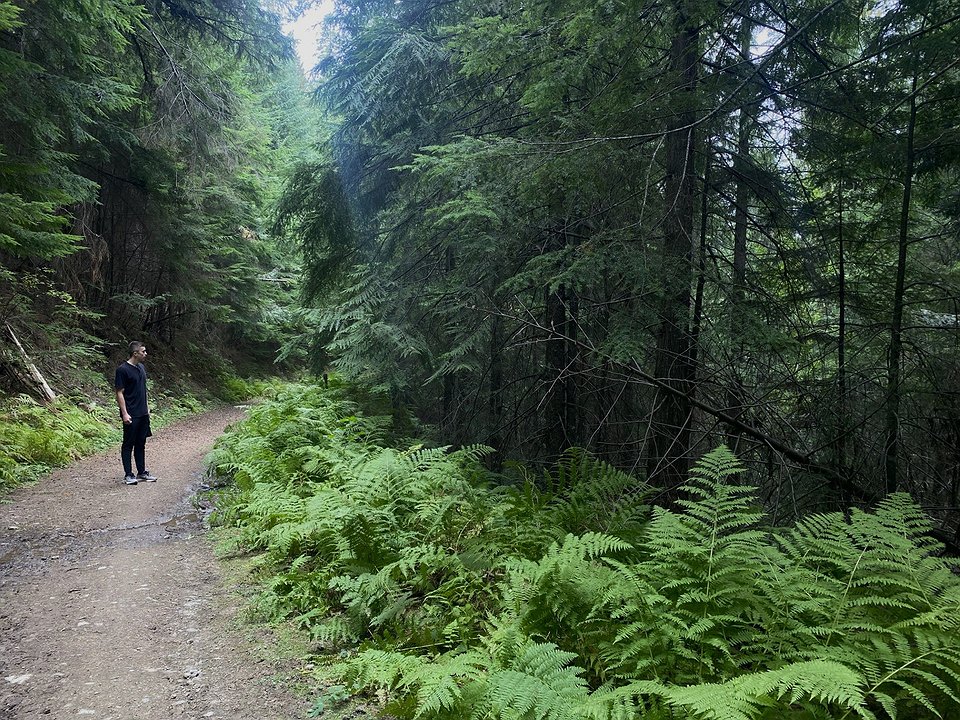Over the Hill: Signs of fall among the evergreens
CATALDO — Before fall foliage reaches its peak, the transition from summer to early fall is more subtle — but that doesn’t mean fall colors can’t already be found all around us.
This past Monday, I hiked the Fourth of July Summit Loop Trail with my brother, Austin. We both noticed how the forest and its understory were so dense that it almost seemed to wall the trail in — especially on the lower parts of the trail closer to Interstate 90, where some of the biggest ferns I’ve seen in North Idaho formed a blanket on the edge of the forest floor.
Though beautiful, scenery like this can make it harder to quite literally “see the forest for the trees” — especially in a mostly evergreen forest. If there’s no discernable difference between one tree and the next, the details can almost seem irrelevant.
But as our forests begin to change with the onset of fall — which seems to happen slowly, then all at once — the details are what become the most interesting part, even in evergreen forests.
Austin was the one to point out that certain trees along the trail had sections of needles that were beginning to brown and asked whether these trees were changing with the season ... or were dying.
I had heard somewhere before that some species of trees commonly lumped into the “evergreen” category do, in fact, change color around the onset of fall — but I had to admit, I wasn’t entirely sure how to tell whether this was the case with the trees along the trail.
With a bit of research, I confirmed that some evergreen trees do experience significant changes with the onset of fall. The needles of Douglas fir trees, one of the most common evergreens in North Idaho forests, turn a wonderful reddish-brown color this time of year.
This color change is part of a seasonal needle drop, much like what is seen in the leaves of deciduous trees. The chlorophyll within older needles breaks down, and the nutrients are drawn back into the tree and redistributed before the needles fall off the tree.
A healthy tree undergoing this process will have patches of brown needles, particularly on its lower, older branches — which was primarily what Austin and I observed on Fourth of July Summit. If an evergreen is sick and/or dying, however, most or all its needles will be brown or will have fallen off.
Though Fourth of July Summit doesn’t have one specific, spectacular vista, there are several spots higher up on the trail where you’re able to look out over what seems like an endless canopy of evergreen forest. The colors you’ll see are changing with the season just like any other forest — if you choose to look close enough.



